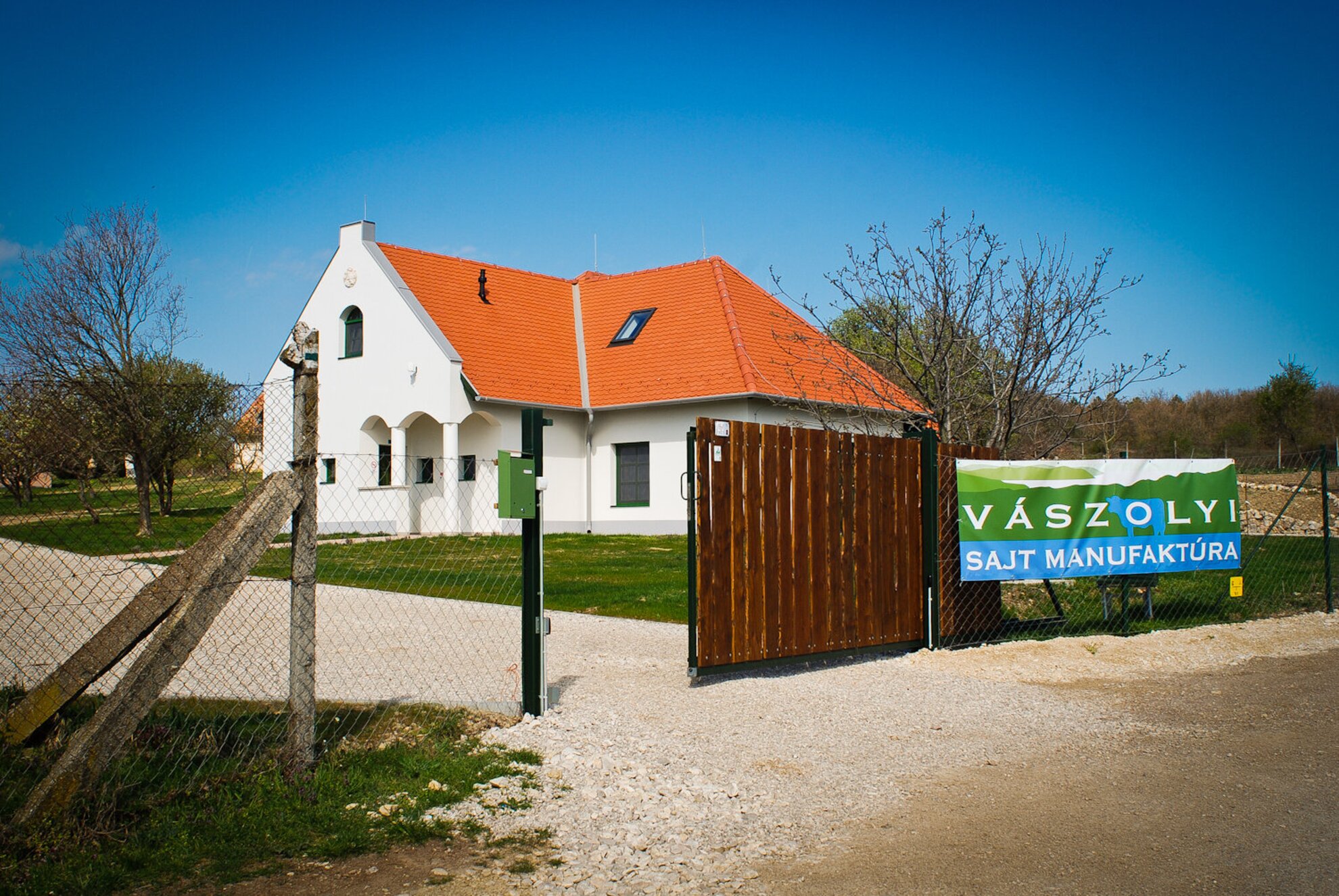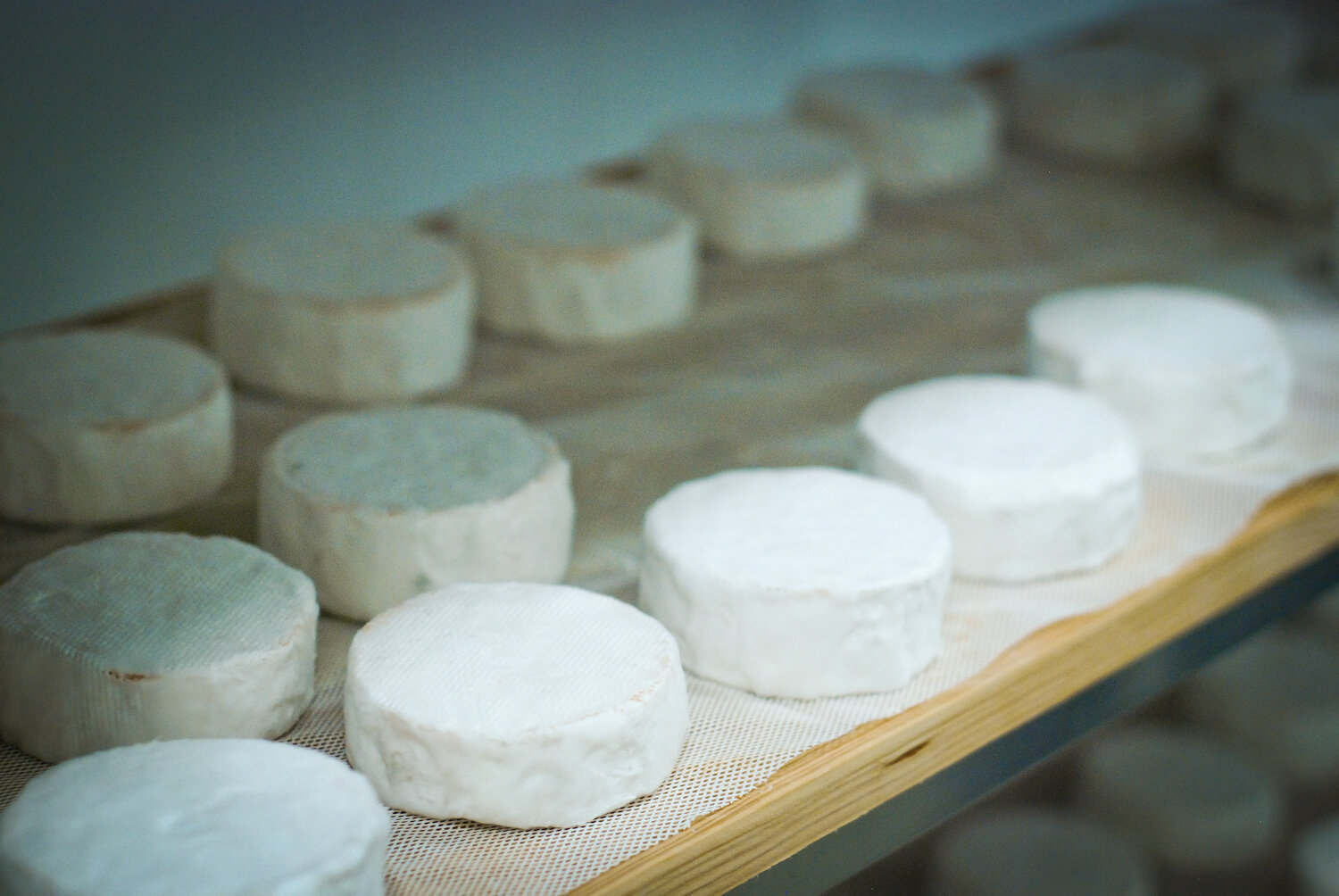The special view of Lake Balaton (with the Tihany Peninsula, the south shore and the Somogyi Hills) from one of the heights of Vászoly caught us by surprise, but it is definitely no surprise that it is featured in the logo of Vászolyi Sajtmanufaktúra (Vászoly Cheese Manufactory)- the owner of the business, Kálmán Reményik also loves to chill out watching the spectacular panorama in the evenings. But only after having finished the day's tasks together with his only co-worker.
In entered the manufactory with the vain hope that I could follow the cheese making process in my notes, but let's face it, I got lost somewhere after the third whey draining, bacteria inoculation, filtering and cooling. During our meeting, Kálmán Reményik stopped from time to time, excused himself and rushed over to the tubs, where the pasteurizing was just taking place with processes calculated to the minute.
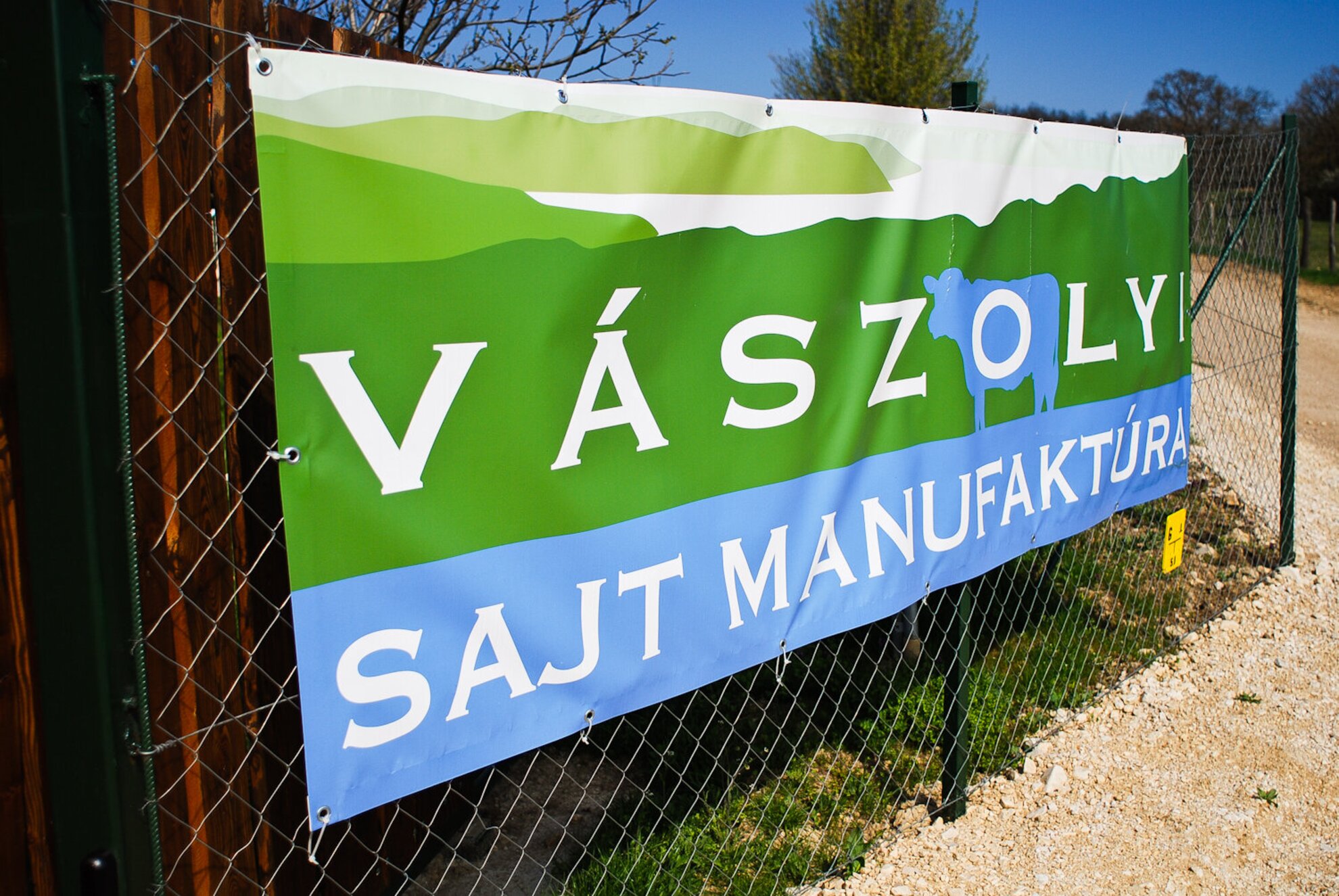
After an hour of concentration, I had to admit it wasn't just a cliché that cheese making is art, and perhaps it was better to leave it to the initiated, since a cheese can be botched in as many manners as the painting of a piece of pottery.
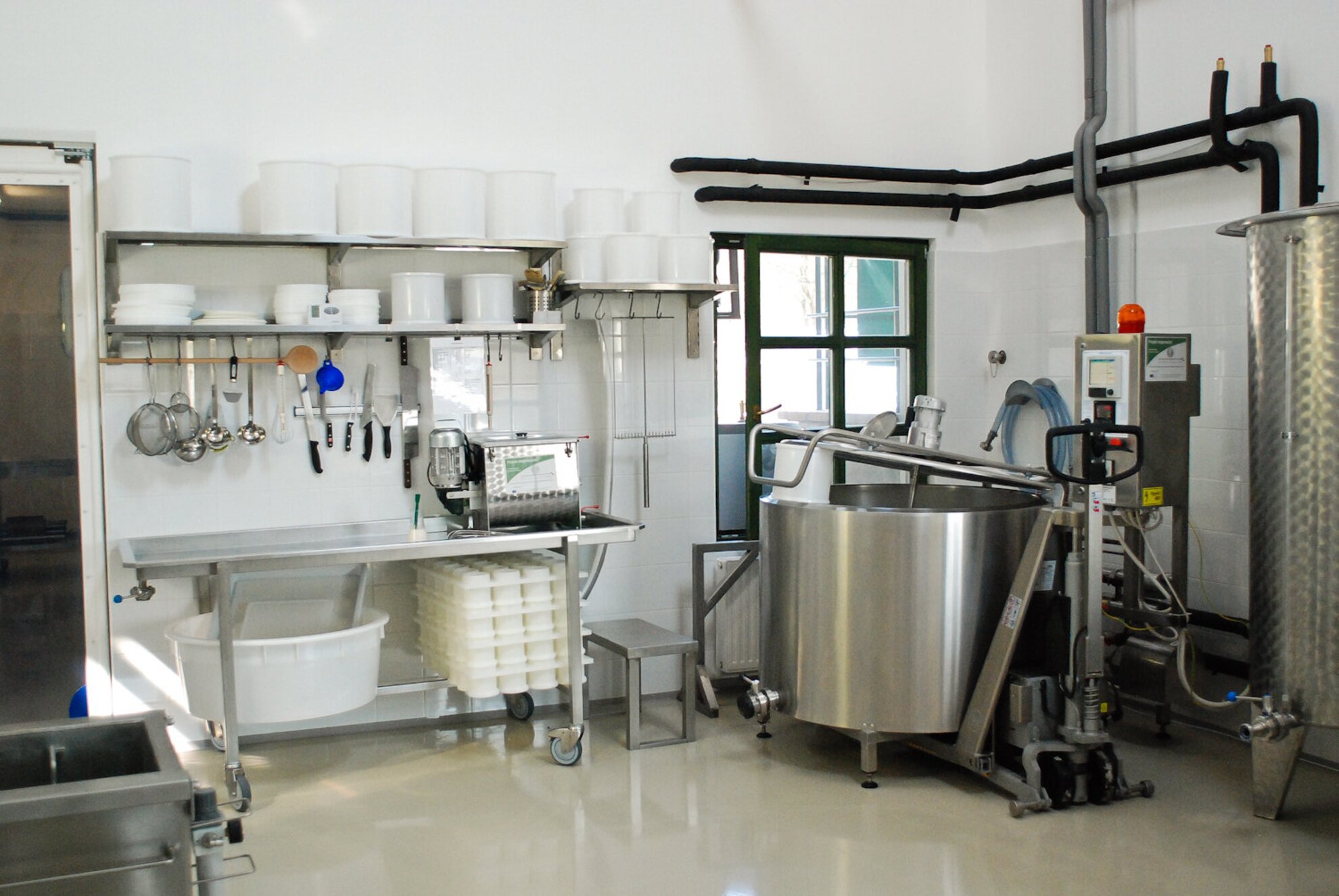
„It all begins with the milk. The quality of the milk depends on where the cows graze. At the moment, we get the milk from a reliable farmer in Vigántpetend, but our long-term goal is to have our own cows.” explains the owner of the Manufactory.
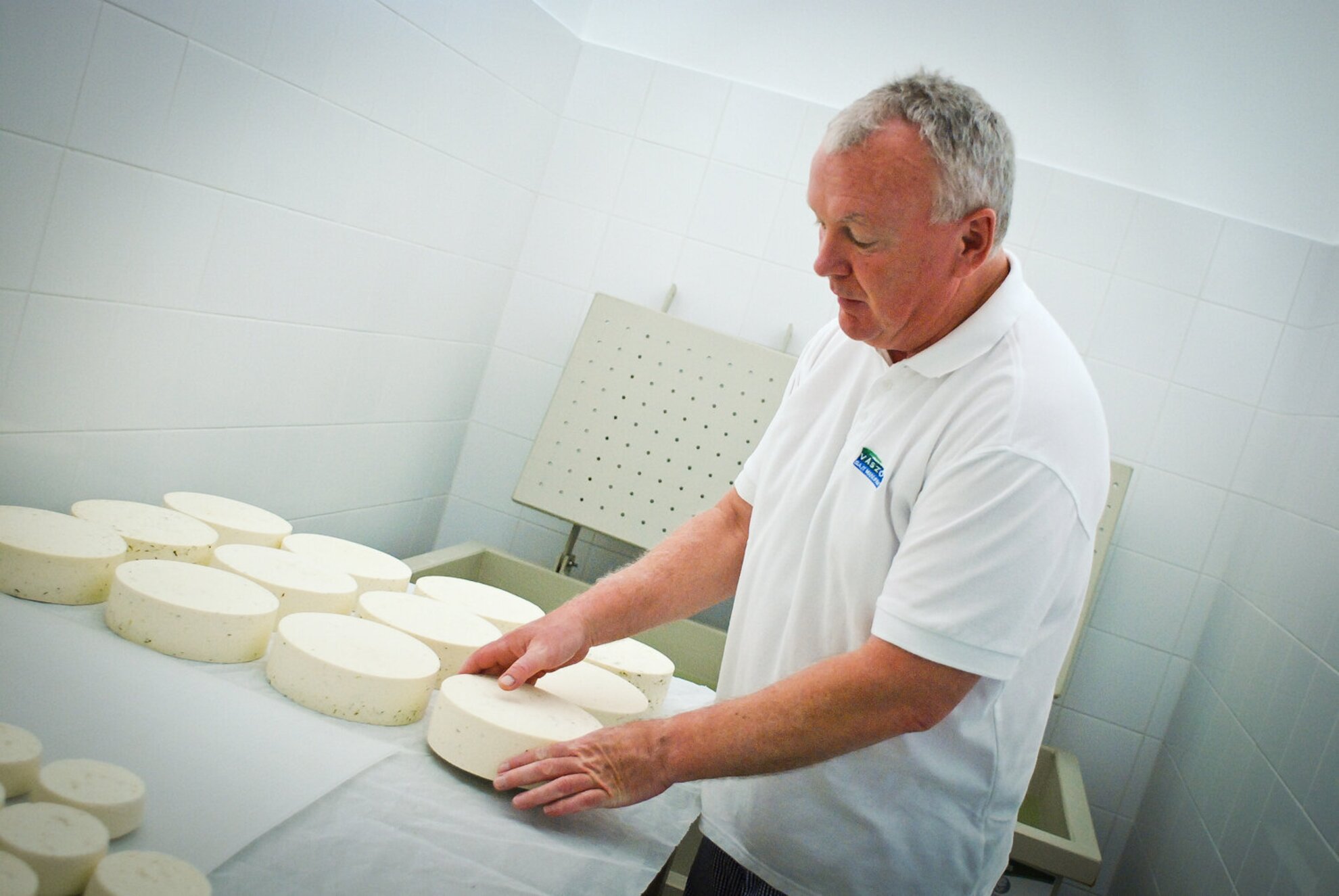
He adds that he is about to go on a 2-week cheese making course in Switzerland to learn the finer tricks of the trade. „In Switzerland or Holland, there are certain expensive cheeses that are only made in May or in the summer, when the quality of the pasture is at its highest. And this is only one factor out of a thousand that determine the character of the cheese. Then there is pasteurizing, whey-based pressing, salting, seasoning, and maturing, for which all cheese makers have their own tested recipe.”
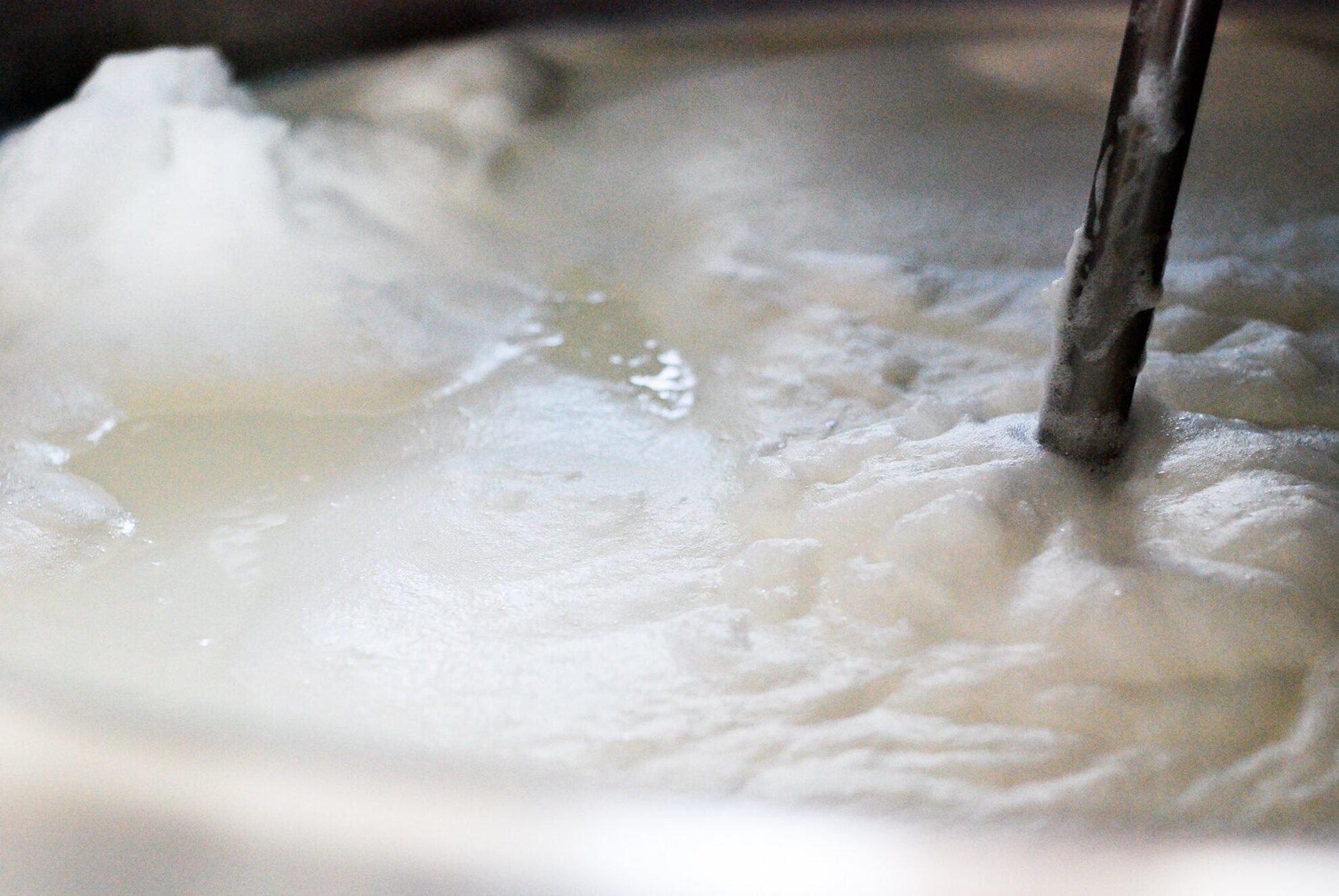
After half an hour, we decided to stop disrupting work and instead went to the tasting room to try the end products. Our two favourites hands down were the cream cheese and the red clover cheese. The latter, we would have sworn, tasted like walnut cheese.
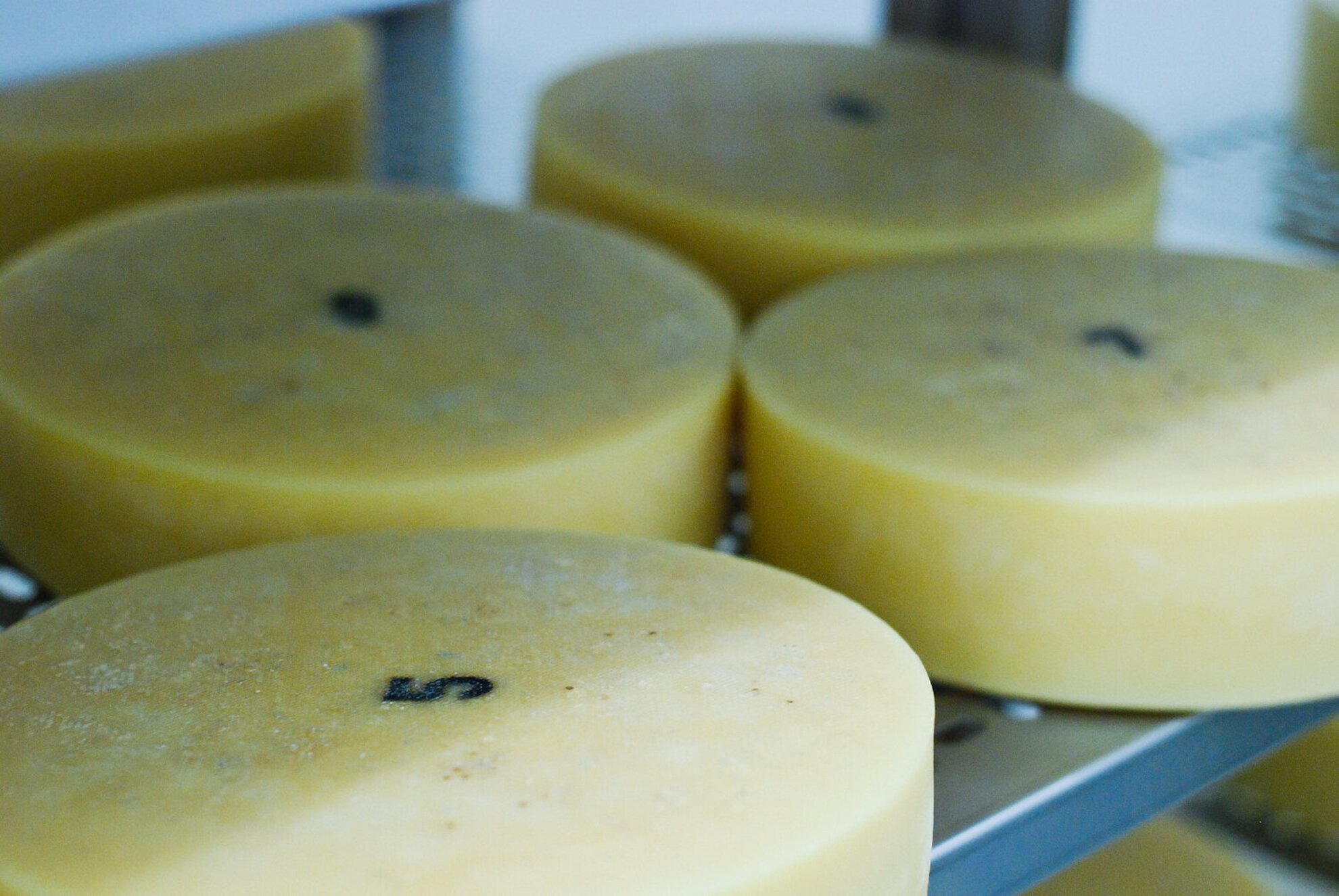
Mr Reményik wishes to give a more characteristic flavour to their camembert-like Szent Jakab cheese, but the soft creation of bloomy rind is already promising, we believe. The after-taste of their medium-hard Balaton cheese is also pleasant.
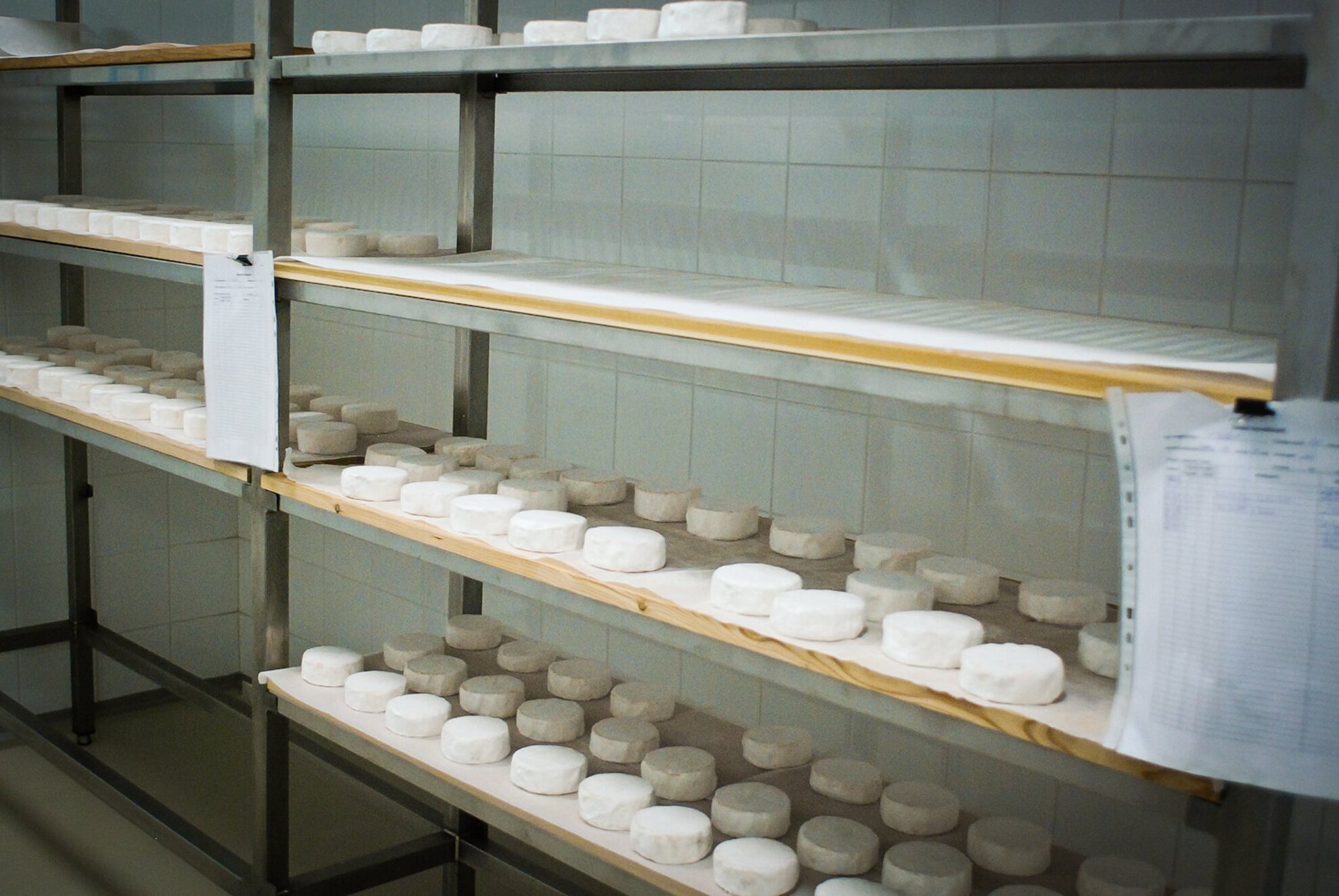
The Manufactury produces 6 kinds of cheese at the moment, with maturing times between 1 and 3 months. According to the owner, two persons can overlook the production of just so many cheeses, since all the products have their own identification number so they can follow the maturing process with precision.
